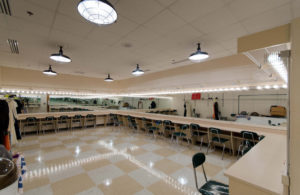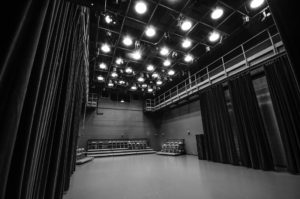Auditorium Design Basics
-
Category
Studio-K12, Innovation -
Posted By
Schmidt Associates -
Posted On
Feb 25, 2015
An auditorium is an auditorium, right? Actually, planning for a new or renovated auditorium in your school is more complex than that. You must design for what audiences SEE, and for the parts they don’t see as well.
There are three main components to auditorium design projects:
1. The Main Seating Area
- Seating is based on approximately 18 s.f. per person.
- The guideline of 18 s.f. per person allows for aisle ways, sound and light control areas, and entries that trap the light when late-comers arrive.
- View angles are critical components of seating layouts; every seat should have a great one.
- Acoustical control is a science, and the use of 3D computer models is essential to develop the optimum “sound environment”.

Lake Central High School
2. The Stage
- The stage is sized to accommodate the largest group to be featured. How big is your biggest band? Do you anticipate a band and choir performing together? Allow for your largest group in the design instead of being sorry later!
- Assume that the typical stage is 30-35 feet deep with a proscenium opening of 40-50 feet wide and up to 30 feet tall. The side stage should be at least half the size of the proscenium opening on each side.
- Ideally, access to the stage is handicap accessible. You can accomplish that with side aprons on the same level as the “cross-aisle.”
- Computer-controlled stage rigging and LED theatrical lighting have become standards in most performance venues.

LaPorte High School – Performing Arts Center
3. Support Spaces
- One of the most important support areas is the set construction area. This is a combination of storage, as well as space to build sets.
- Don’t forget the dressing rooms.
- Plan for a ticket booth, a “green room” that can double as rehearsal and instructional space, and a general storage area.
- We’re also getting a number of requests from schools to design auditoriums that also have an adjacent small and flexible performance space—think “black box” theater or small recital hall for music or dance.
Pardon the pun, but a little “out of the box” thinking can be helpful, because auditoriums are a valuable asset for serving students—and for inviting families and community members in to have a pleasant experience at your school.









